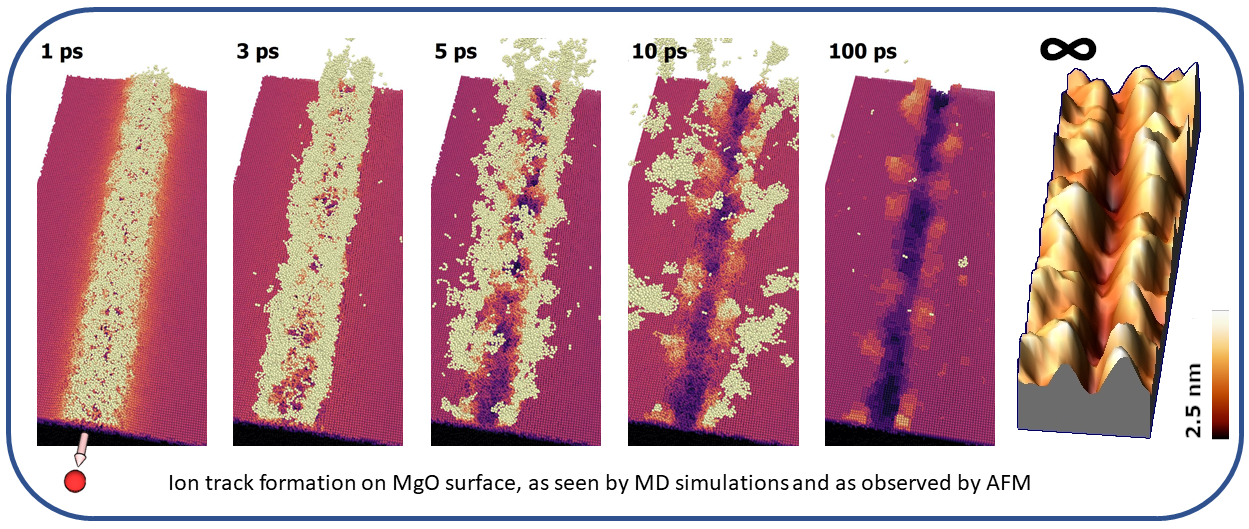New insights into how grazing incident swift heavy ions interact with different materials
|Swift Heavy Ions (SHI) are a special form of high-mass particle radiation. In many solids, incident swift heavy ion beams release sufficient energy to generate long, nanometer-sized damage trails called ion tracks. Swift heavy ions, and ion tracks, have established applications in numerous industrial sectors, including microfabrication of nanomembranes, hadron therapy, radiation hardness testing (including nuclear waste vitrification studies) and fission track dating.
Dr. Marko Karlušić (Ruđer Bošković Institute), and colleagues, discovered that aluminium oxide (Al2O3) and magnesium oxide (MgO) exhibit well-pronounced nanometric modification on the surface when irradiated under a grazing incidence SHI beam. In contrast, the same ion beam with normal incidence leaves no damage. The Time-of-flight Elastic Recoil Detection Analysis (ToF-ERDA) beamline, available at the Croatian CERIC Partner Facility at the Ruđer Bošković Institute, allowed for the irradiation of samples. At the same time, Rutherford Backscattering Spectrometry (RBS), available at the same CERIC Partner Facility, was employed to investigate the formation of ion tracks below the surface of the materials. These and other experiments also allowed to characterise the morphology of the ion tracks on the two materials, which appear different. The irradiation of aluminium oxide generated extended hillocks, while magnesium oxide showed a grove-like extended structure surrounded by droplets of ejected material.

This research allowed insights into how grazing incident swift heavy ions interact with different materials providing a deeper understanding of the fundamental processes of surface nanostructuring. The application of such a process could allow for the controlled production of periodic surface nanopatterns useful for thin-film template-based synthesis, or by tuning the physical properties of 2D materials via strain – when placed over nanostructured substrates.



